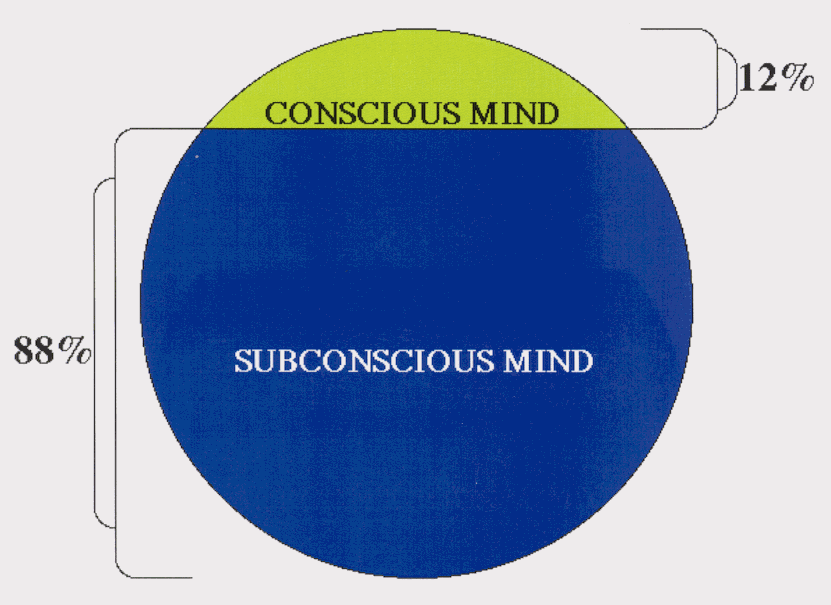
How To Think Positive Everyday: 4 Simple Steps to a Happier Life
One thing that I noticed immediately when joining Buffer was our emphasis on cultivating positivity.
If you take a quick look at our culture deck, you can see the high priority we place on this. Since I joined the team, positive thinking is something I’ve focused on a lot, and it’s been fun to see how spending time with positive thinkers rubs off on me.
At the moment, some of us are experimenting with sharing one great moment we had at the end of each day. I’ve found that making this a habit has encouraged me to look out for positive moments during the day, since I know I’ll need to share one later on. It’s also been a great way to increase my feelings of gratitude—often for everyday things, like a great coffee to start the day or encouragement from a friend.
I wanted to really dig into positive thinking as a habit and see what science has to say about it. I found some really interesting research on how positive thinking can improve our health and happiness, as well as some great advice to cultivate a habit of being positive.
Why be positive in the first place? – Consider these 3 key benefits
Before we get into building positivity into your life, let’s look at why we would even bother. What are the real benefits of being more positive?
The first thing I realized is how negative emotions affect us: they have proven many times to narrow our focus and scope of work. It’s one of the most powerful ways shut our minds off to opportunities or new ideas. This is why this post about listening with intent to agree is so great—it encourages listening with a positive emotion (agreeability) in mind, so that our minds will more naturally open up to what the speaker is saying.
We know that the effects of negative emotions are biological instincts programmed into our brains to help us survive. For example, if we were to come across a dangerous animal in the wild, the negative emotions of fear and anxiety would narrow our focus so that all we could think about was not becoming that animal’s dinner. This helped us to more efficiently direct our energy and mental functions towards that objective, without wasting our resources on unnecessary actions like working out which direction we’re going or thinking about what to have for dinner when we get home.
Of course, modern life doesn’t often put us in life-and-death situations like this, so allowing negative emotions to narrow our thinking can be harmful. It can make us less open, more hard-headed and more difficult to communicate with.
1. Negativity doesn’t work – Literally – Our subconcious brain can’t handle it
The other thing about negativity is that our brains can’t process negative words according to the latest studies. So when we hear phrase like “don’t smoke” or “don’t touch that,” our subconscious skips over these negative words and simply hears “smoke” or “touch that.” Our conscious mind can obviously process these words, but it’s the subconscious that makes a lot of our decisions without us realizing.
For young children, this can often be an issue because they haven’t learned to use their conscious minds to process those negative words and take control of the subconscious to make sure they follow instructions correctly. It’s no surprise why children decide that way if you look at the split between conscious and subconscious mind according to psychology:

What this means for us is that we struggle to change our habits or thought patterns when we tell ourselves negative phrases, since only our conscious minds can take those in. We can make this much easier and let the subconscious do its job by using positively-framed phrases like “refrain from smoking” or “walk away from that.”
2. You’ll improve your outlook of the future
Positive thinking can actually improve our overall happiness. I’ve written about this before in terms of noting down things we’re grateful for on a regular basis and how that can improve our happiness.
A study at the University of North Carolina also showed that positive emotions are more likely to encourage people to plan ahead and think of actions they would like to take or activities they’d like to participate in the future. Negative emotions, on the other hand, led to participants being less inclined to think positively about their future.
3. You’ll be more healthy
Yep, positivity has shown to directly affect your physical health. Another study from the University of North Carolina used the ancient practice of loving-kindness meditation to test how cultivating positive feelings like love, compassion and goodwill towards others could affect the emotional and physical health of the participants.
Compared to the control group who did not participate in the meditation, the meditators showed increases in positive emotions like amusement, awe and gratitude during the research period. They also reported feeling more socially connected and closer to the people around them.
Physically, these participants showed improvements in vagal tone which is linked to cardiovascular health and a general indicator of physical well-being.
Cultivating the positivity habit – 4 things to start with
Now that we know how beneficial positivity can be to our health and happiness, let’s look at some ways of building a habit of being positive.
1. Prepare your environment
Leo Babauta always has great advice on building habits, and this is one of my favorites. The environment we try to build new habits in (or break old ones, even) has a huge effect on how successful we are. Environment in this case includes the people we spend time with and the messages we hear or tell ourselves, as well as our physical environment.
The trick here is to ensure your environment is as conducive to you continuing your new habit as possible. Here are some of Leo’s suggestions for how to achieve this:
- Hang out with people who are doing the habit you want to do.
- If there are people around you who don’t do the habit you want to do, talk to them about what you’re trying to do, and ask for their help. Ask them to support you, and not rag on you all the time for changing.
- Join a supportive community online who are doing the things you want to do.
- Read blogs and books that inspire you to do the habit.
- Have reminders all around you.
- Create a public challenge for yourself, to create accountability.
- Have a habit partner you report to each day, and make a vow never to miss.
In terms of being positive, you could find a friend or family member to do this with to keep you accountable, or set a daily reminder so you don’t forget. Filling your work space with positive sayings or images could help, and reading books that encourage positive thinking will reinforce this.
2. Start smaller than you think – The “floss only 1 tooth” – approach
Another of my favorite pieces of advice from Leo’s blog Zen Habits is to make your habit so small that you can’t say no. If you do this to start with, you can focus more on building a habit, rather than on results or how big your habit is.
Here’s Leo’s explanation of why this works:
Another common habit that too few people actually do is flossing daily. So my advice is just floss one tooth the first night.
Of course, that seems so ridiculous most people laugh. But I’m totally serious: if you start out exceedingly small, you won’t say no. You’ll feel crazy if you don’t do it. And so you’ll actually do it!
That’s the point. Actually doing the habit is much more important than how much you do.
Right now I’m just taking note of one great moment I noticed, at the end of each day. Sometimes it only takes a few words to share this, sometimes it’s two sentences. I’ve incorporated it into my daily practice of sharing what I got done with the Buffer team, so it’s easy to remember and easy to do.
Starting small has helped me to incorporate the practice into every day so it’s becoming a habit, without worrying about what a big task it is.
3. Take note of 1 positive moment every day
Noticing the positive things that happen in your everyday life has been proven to be a successful method of increasing your positive thinking. This doesn’t just happen when you’re doing the exercise: the effects can actually last much longer.
A study of 90 undergraduate students had one half of them write about positive experiences for three consecutive days. The second half wrote about control topics that didn’t affect their emotions. After three months, the study found that the students who had written about positive experiences still had better mood levels and fewer illnesses. If your best ideas and reflections of positive moments always happen in the shower like they do for me, not to worry, you can take notes there too with something like Acqua notes:

One activity that’s often said to improve positivity is to write down (or share with someone) three things you’re grateful for at the end of each day.
4. Try to Meditate – 2 minutes is enough
Meditating is beneficial for the body and mind. It not only improves mindfulness and positive thinking while you’re doing it, but it has been shown to decrease illness and improve mindfulness and feelings of purpose in life up to three months after being practiced daily for a short period.
Starting small works for meditating, as well. Leo Babauta recommends just 2 minutes to start with, which is easy to do and helpful in developing a strong habit. After establishing the habit for several weeks, you can slowly increase the length of your meditation sessions to an amount that gives you the most benefit.
Filling my head with more positive thoughts has made a huge change to how I see things. Have you experimented with any of the above before? I’d love your thoughts on building a positivity habit below. Or you can Tweet me @bellebethcooper anytime to chat.
This article first appeared on the Buffer Social blog in August 2013 and has since been moved here to the Open blog.
Try Buffer for free
140,000+ small businesses like yours use Buffer to build their brand on social media every month
Get started nowRelated Articles

As a self-proclaimed tools nerd, I’ve tested out many of the ever-growing list of AI productivity tools on the market. These are the ones I keep coming back to.

Looking for some low-lift ways to make yourself happier? Here's some of the best research that we've found on personal happiness.

Personal brand experts walked this writer through exactly how to switch up her personal brand — and offered some more general advice, too.